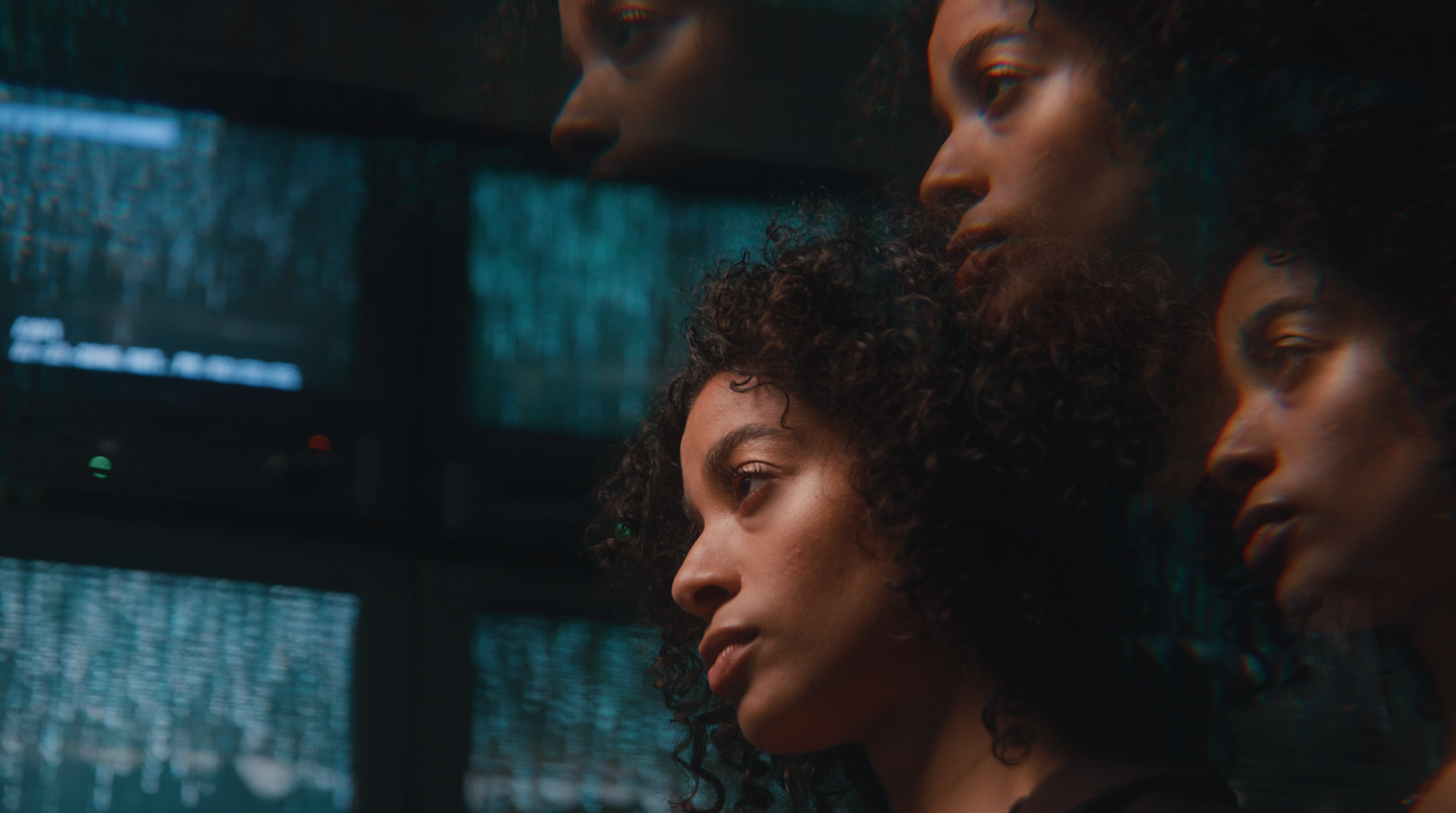
The Filmpac Ad Challenge
We know you work hard at your craft, and we want to invite you (yes YOU) to show us what you've got in our 10-day Ad Challenge!
Continue ReadingThe ability to quickly and cleanly edit music tracks to fit your video is a critical skill for any filmmaker or video editor to have. In this video, we’re going to explore 5 useful music editing tips that every filmmaker (from beginner to expert) should know.
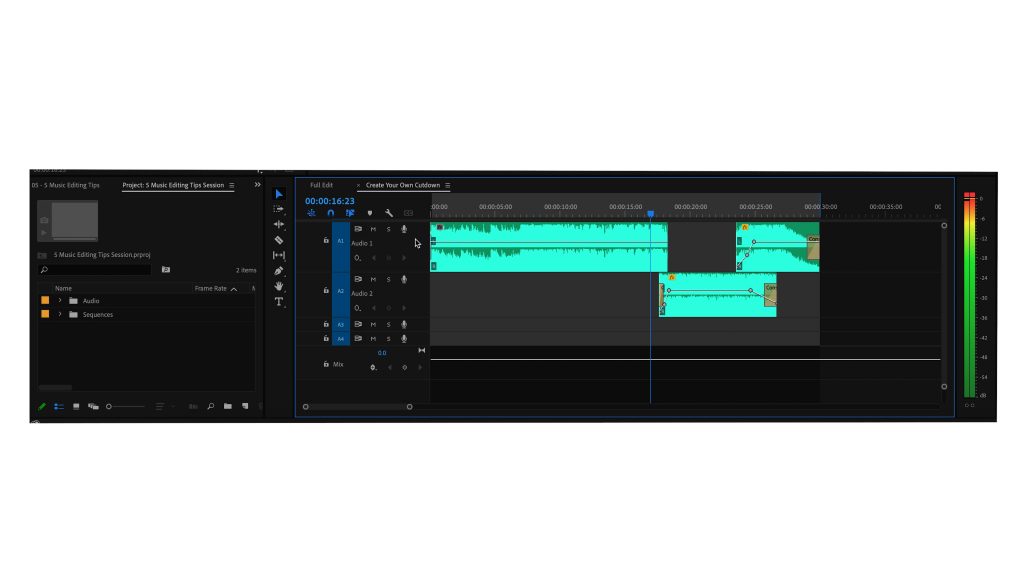
Some stock music libraries offer shortened versions of songs and background music, such as a :15 or a :30, but these can often limit you in terms of how your edit will flow. If you’re trying to shorten a 2 minute track to 60 seconds, consider creating your own cutdown to match your visuals. You can find specific transition points in the song that allow you to dictate where your edit goes, rather than a pre-shortened track.
Every video is unique, and your music should be, too.
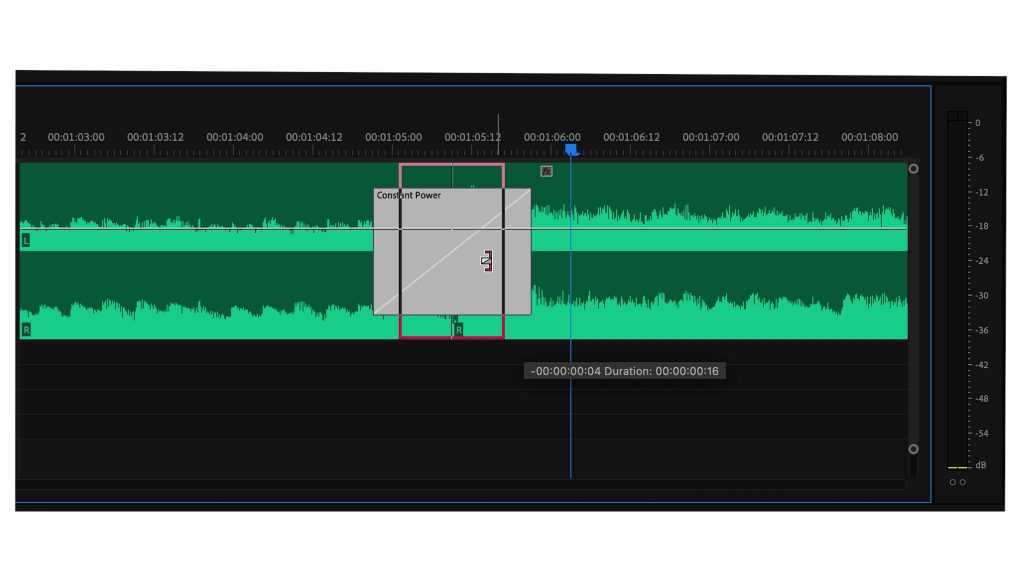
Clicks and pops in your audio are never a good thing. But if you just cut two sections of a track or video clip together, odds are that there will be some unpleasant noise at that edit point, which could be audible even through iPhone or Android speakers on social media. This is a common problem with first-time editors, particularly when editing voiceovers.
Crossfades can also be applied as video effects, typically known as cross-dissolves.
Crossfades are the perfect tool to fix this. I generally like to use extremely short crossfades when I’m just splicing two sections of a song together, as this eliminates any clicks or pops within the audio file but preserves the structure of the edit.
Most editing platforms (such as Adobe Premiere Pro) have multiple tutorials, templates, and step-by-step guides explaining how to create and apply crossfades.
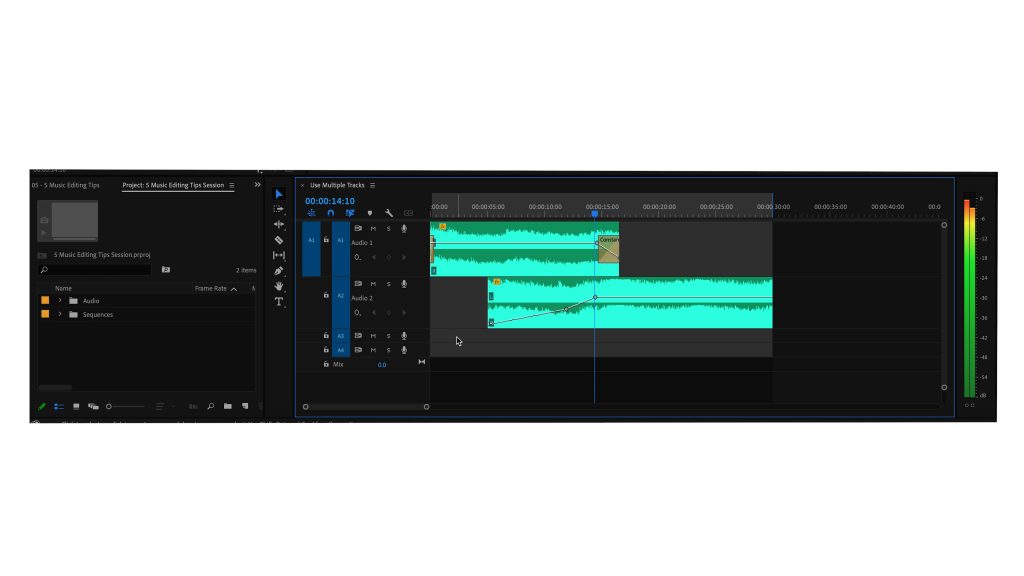
When a simple edit won’t do the trick, I like to split my song between multiple tracks and use fades, rather than just crossfading on one track.
You’ll have a lot more control over the volume and length of the fades this way, and you’ll be able to layer your audio to perfectly match the emotions in your story.

We all know a clunky music edit when we hear one. So how do we avoid this? The biggest reason why some music edits sound so disruptive and distracting is because they interrupt the flow of the song.
When you’re editing a piece of music, you need to think like a musician. You should be able to tap your foot to the beat before and after your edit, without any interruption. Generally, you want to make music edits at the beginning of a measure, or on a downbeat.
It can also be helpful to use the peaks of the waveform to really dial in that perfect spot to switch things up.
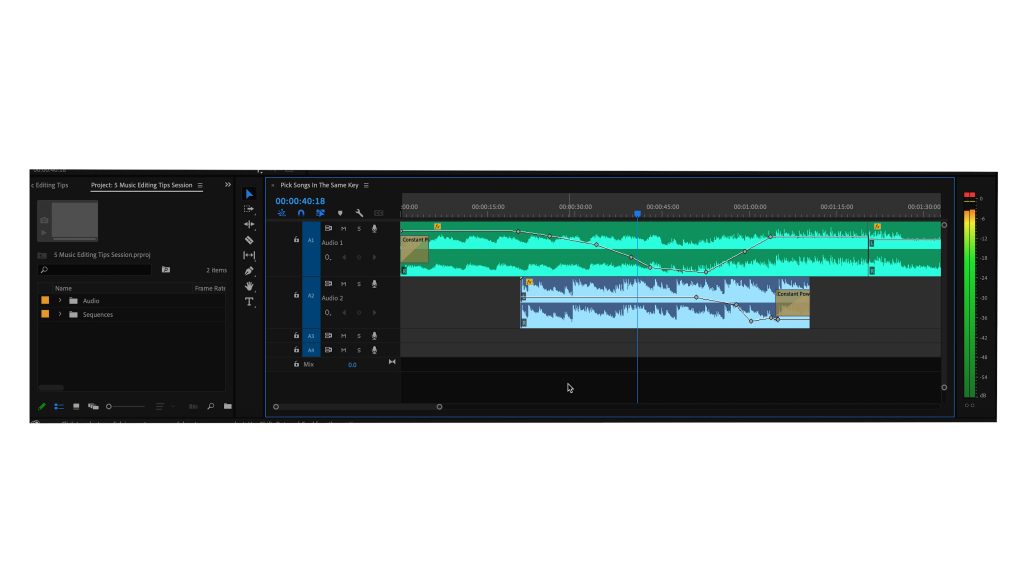
When you’re cutting two different tracks together, your job will be a lot easier if they’re in the same key. This one can be a bit tricky if you don’t have a musical background, but if you listen critically to both tracks back-to-back, you should be able to just feel if they’ll go well together.
Try humming along with the very beginning of each song. If you’re humming mostly the same notes, your tracks will probably go well together. But if you have to significantly change pitch when switching to that second track, you might want to find a different one.

These tips and tricks have helped me a ton over the years as a video editor, and they’ve ensured that my projects are elevated by my music rather than constrained by it.
Just like color correction, color grading, cinematic video editing, and other aspects of post-production, music and sound effects editing makes a big difference on the final quality level of your video or music video.
You can find world-class, royalty-free music here.
We hope that you’ll find these useful, and that they might be able to apply to your next edit.
Kevin Graham is the Music Director at Filmpac.

We know you work hard at your craft, and we want to invite you (yes YOU) to show us what you've got in our 10-day Ad Challenge!
Continue Reading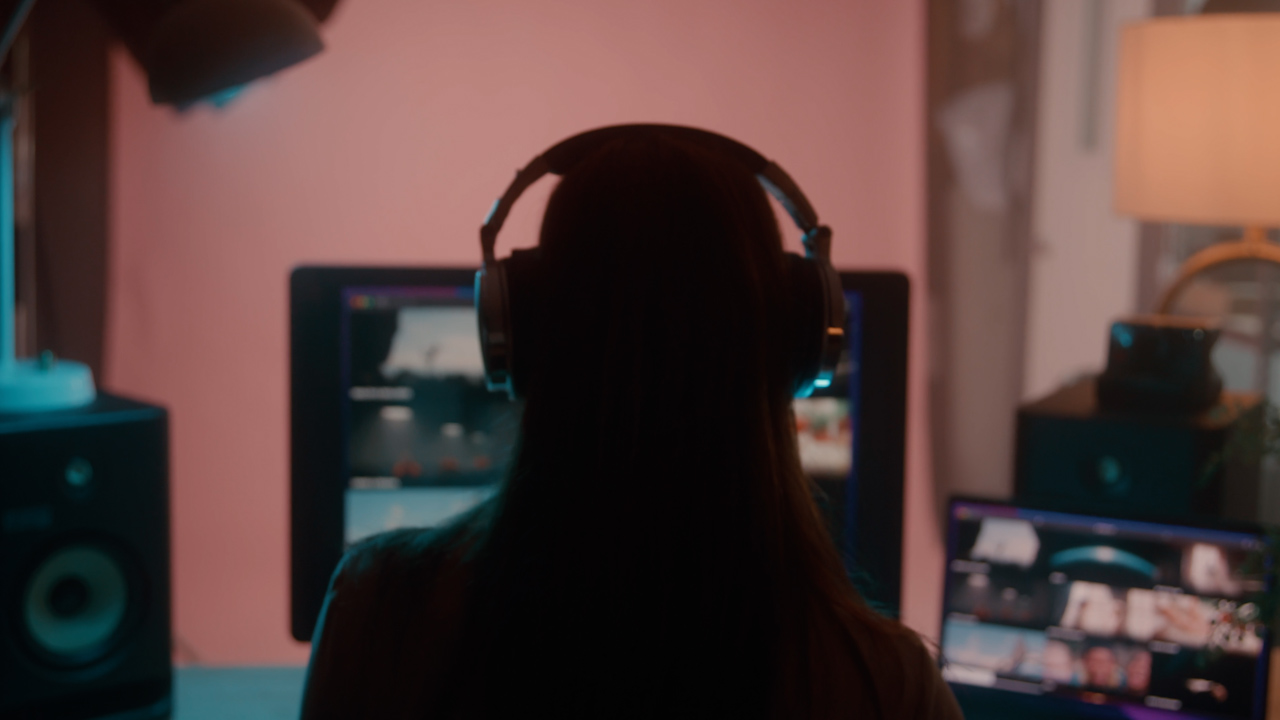
When it comes to professional video editing in the 2020s, two powerful software options stand out: Adobe Premiere Pro vs. DaVinci Resolve.
Continue Reading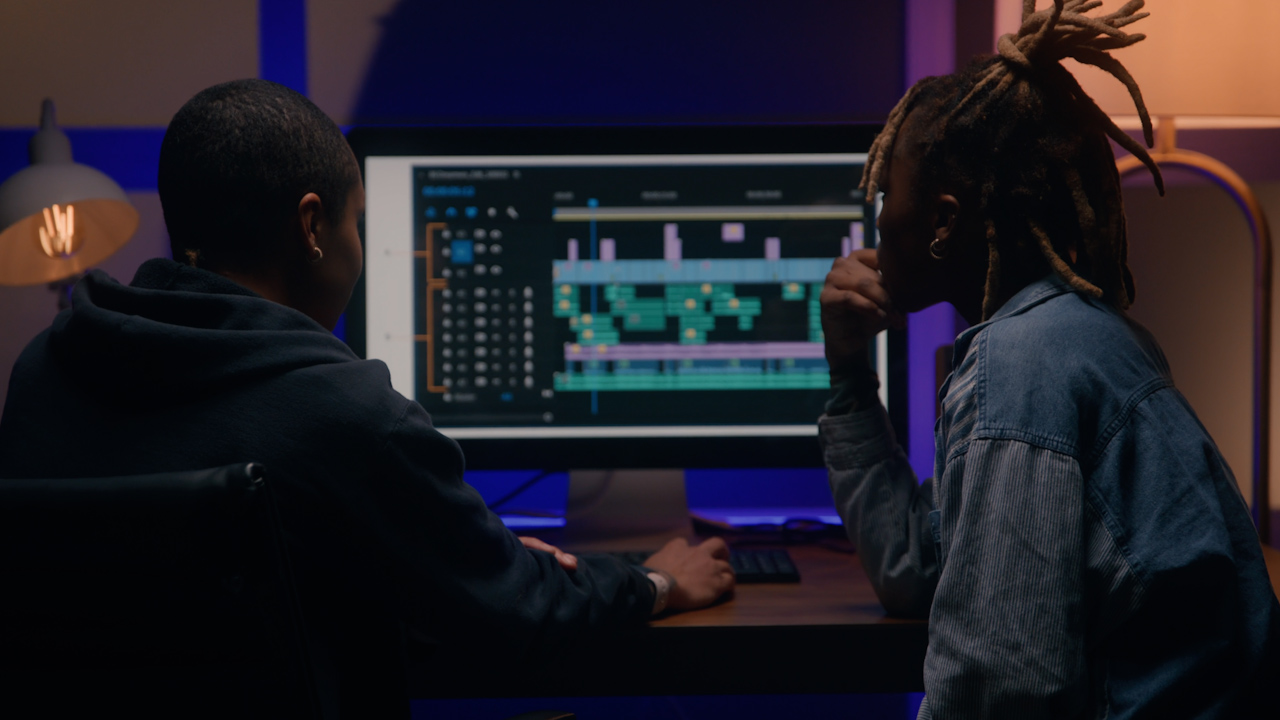
As content creators, the computers we use to edit our videos are just as important as the cameras we use to film. Here are our favorites.
Continue Reading
By far, the two most common frame rates in modern American video editing and production are 24fps and 29.97fps. Here's the difference.
Continue Reading
Filmpac’s newly-designed Project Feature is a powerful tool for collaborative video editing. Here’s a quick rundown of how it works.
Continue Reading

One of the most difficult parts of being a professional filmmaker is effectively managing and budgeting your time.
Continue Reading
Want to make money selling footage through a major stock footage platform like Filmpac? This page will walk you through the processs.
Continue Reading